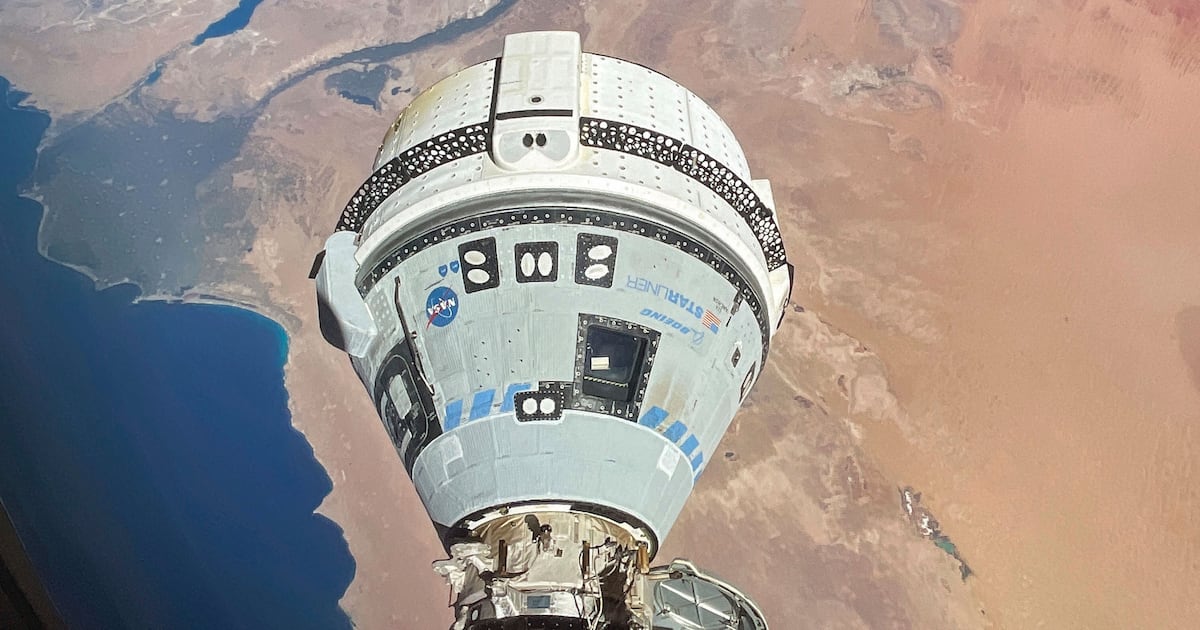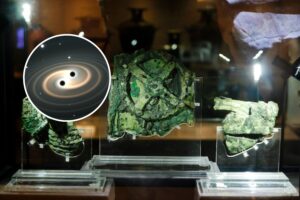More than 50 days into a mission originally planned to last 10 days, NASA and Boeing officials say they are working to prepare for an agency review this week of the flight readiness of Boeing’s Starliner space capsule, which showed multiple problems on its debut flight with crew to the International Space Station, which launched on June 5.
After a test firing of thrusters on the docked Starliner capsule on Saturday and weeks of ground tests to identify problems with the small propulsion devices that help the spacecraft move and maneuver, mission officials say they are ready to collect and send the collected data for review. They expressed optimism that the spacecraft would be safe to transport veteran NASA astronauts Sonny Williams and Butch Wilmore back to Earth at the long-delayed completion of the mission.
“My job is to provide a safe return vehicle for the crew,” Mark Nappi, vice president and program manager of Boeing’s commercial crew program, said during a news conference last Thursday. “I am very confident that we have a good vehicle to bring the crew back. We need to take the next steps to show this information to everyone else.
Previous reports from NASA detailed that five of 28 maneuvering thrusters failed to operate as expected during the Starliner’s docking with the space station on June 6. Engineers also identified five small helium leaks, some of which were detected before the spacecraft launched. Helium is used in the capsule’s booster launch procedure. The problems led to a series of delays for the Starliner’s return flight.
Ground tests at NASA’s White Sands Test Facility in New Mexico attempted to recreate the conditions that led to the thruster failures. While four of the damaged units have been brought back online and appear to be operating within expected parameters, one of the thrusters has been shut down for the remainder of the mission. Officials say they believe the thruster failures were the result of unexpected levels of heat generation and have identified a number of potential causes that they continue to investigate.
When will the Starliner return to Earth?
If the capsule is given the green light after the agency’s flight readiness review process, the Starliner could be set for a return flight in August. If the spacecraft is deemed unsafe to return Williams and Wilmore, NASA Commercial Crew Program Manager Steve Stich noted that there are backups, thanks to SpaceX’s Dragon Crew Capsule program, which has flown nearly a dozen missions carrying astronauts forward and back to the ISS.
“Obviously the luxury in our program today … is that we have two different systems that we fly,” Stich said at last week’s news conference. “I’d rather not get into all those details until we get to that time, if we ever get to that time, what we plan to do, but the beauty of having Dragon and Starliner, two different space transportation systems, is that we can I use as backups.
Both Stitch and Nappi previously noted that the Starliner is approved for use as an emergency return vehicle if an unseen event on the space station necessitates an evacuation, and that the primary option is for Williams and Wilmore to return to the Boeing capsule. There are currently six spacecraft docked to the ISS, including the Starliner, and two of them, the SpaceX Dragon and the Russian Soyuz MS-25 crew craft, can carry astronauts back to Earth in addition to the Starliner.
Utah’s Dugway Test Site was considered a primary return landing site at the start of the Starliner mission, but it’s unclear whether the western desert location will still be at the top of the capsule’s return list. Other possible landing sites include two targets at the massive White Sands Missile Range, New Mexico, and Wilcox, Arizona, according to NASA. Edwards Air Force Base in California is available as an emergency landing site.



